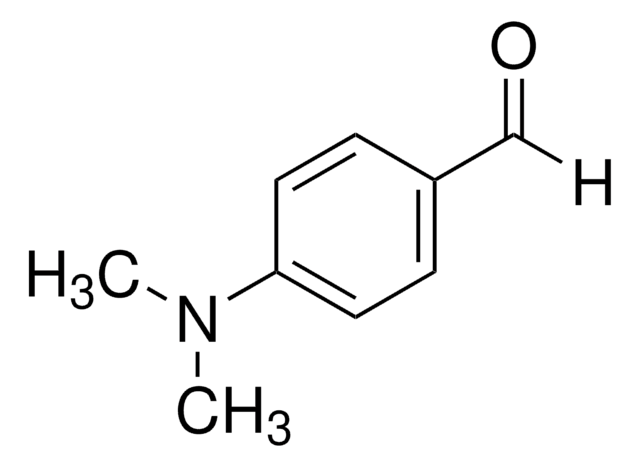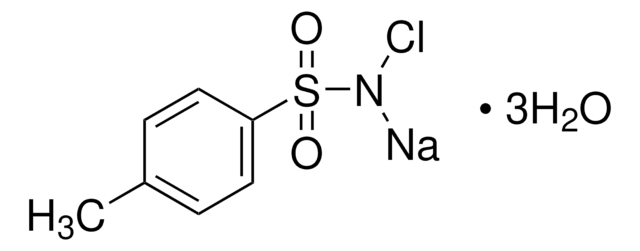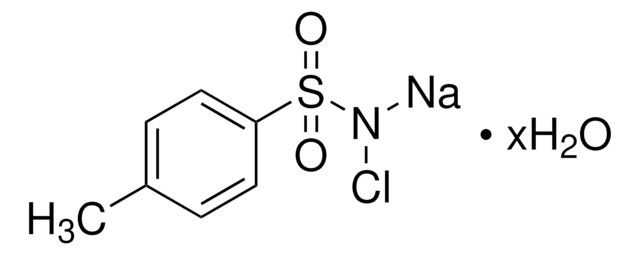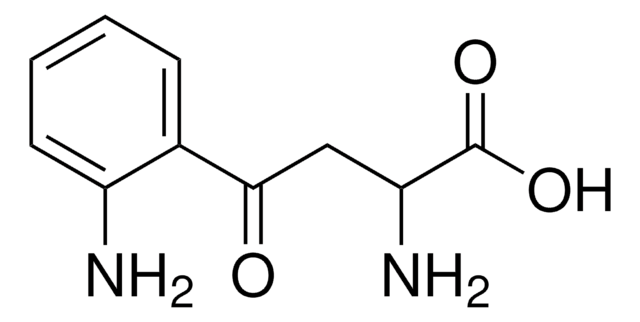D2004
4-(Dimethylamino)benzaldehyde
suitable for histochemical demonstration of nitro blue tetrazolium reduction in neutrophils
Synonyme(s) :
p-Dimethylaminobenzaldehyde, DMAB, Ehrlich’s reagent
About This Item
Produits recommandés
Essai
≥99% (TLC)
Niveau de qualité
Forme
powder
Pf
72-75 °C (lit.)
Solubilité
ethanol: 50 mg/mL
Adéquation
suitable for histochemical demonstration of nitro blue tetrazolium reduction in neutrophils
Application(s)
diagnostic assay manufacturing
hematology
histology
Température de stockage
room temp
Chaîne SMILES
CN(C)c1ccc(C=O)cc1
InChI
1S/C9H11NO/c1-10(2)9-5-3-8(7-11)4-6-9/h3-7H,1-2H3
Clé InChI
BGNGWHSBYQYVRX-UHFFFAOYSA-N
Vous recherchez des produits similaires ? Visite Guide de comparaison des produits
Application
Mention d'avertissement
Warning
Mentions de danger
Conseils de prudence
Classification des risques
Skin Sens. 1B
Code de la classe de stockage
11 - Combustible Solids
Classe de danger pour l'eau (WGK)
WGK 1
Point d'éclair (°F)
327.2 °F - closed cup
Point d'éclair (°C)
164 °C - closed cup
Équipement de protection individuelle
Eyeshields, Gloves, type N95 (US)
Faites votre choix parmi les versions les plus récentes :
Déjà en possession de ce produit ?
Retrouvez la documentation relative aux produits que vous avez récemment achetés dans la Bibliothèque de documents.
Les clients ont également consulté
Notre équipe de scientifiques dispose d'une expérience dans tous les secteurs de la recherche, notamment en sciences de la vie, science des matériaux, synthèse chimique, chromatographie, analyse et dans de nombreux autres domaines..
Contacter notre Service technique









